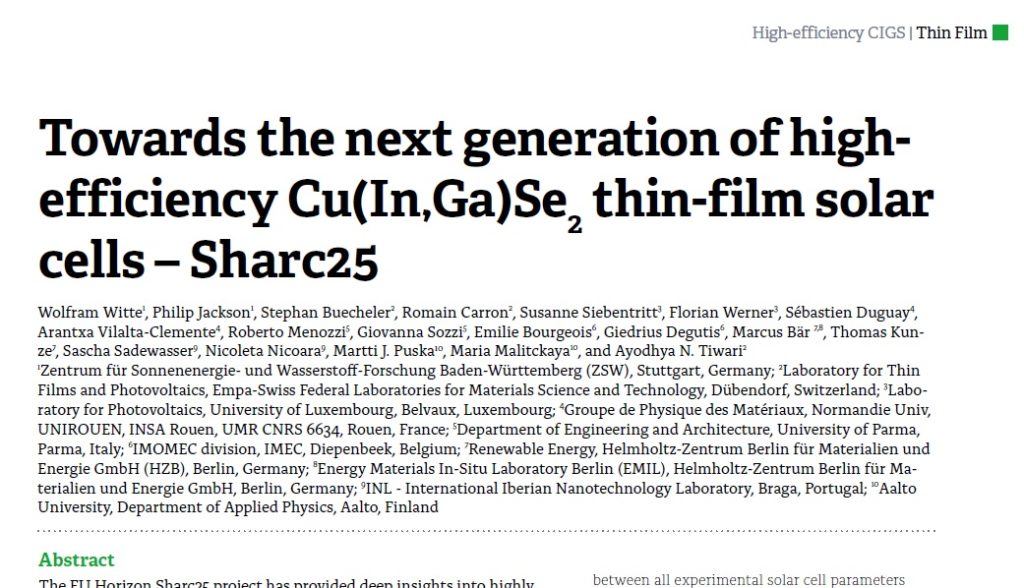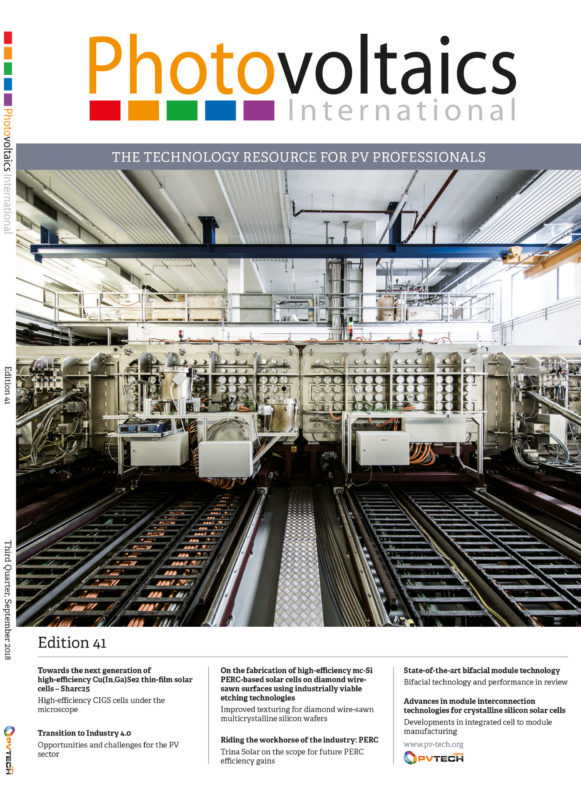By Wolfram Witte; Philip Jackson; Stephan Buecheler; Romain Carron; Susanne Siebentritt; Florian Werner; Sébastien Duguay; Arantxa Vilalta-Clemente; Roberto Menozzi; Giovanna Sozzi; Emilie Bourgeois; Giedrius Degutis; Marcus Bär; Thomas Kunze; Sascha Sadewasser; Nicoleta Nicoara; Martti J. Puska; Maria Malitckaya; Ayodhya Nath Tiwari
The EU Horizon Sharc25 project has provided deep insights into highly efficient Cu(In,Ga)Se2 (CIGSe) thin-film solar cells fabricated by lowand high-temperature co-evaporation using advanced characterization methods, analytical tools, device simulation, and density functional theory modelling. This complementary approach led to a continuous knowledgedriven development and improvement of the CIGSe absorber. Based on optimized chemical composition, profiles, and alkali metal post-deposition treatments (PDT) using KF, RbF, and CsF, the CIGSe cell efficiency could be substantially increased to a record value of 22.6%. Due to additional modifications at the absorber/emitter (replacement of standard buffer system by a combination of thin CdS and TiO2) and back contact/ absorber (introduction of Al back reflector in combination with InZnO diffusion barrier) interfaces, in particular the short-circuit current could be increased. Furthermore, passivation layers in combination with point contact schemes at the CIGSe front and back side were developed and are still under investigation.


